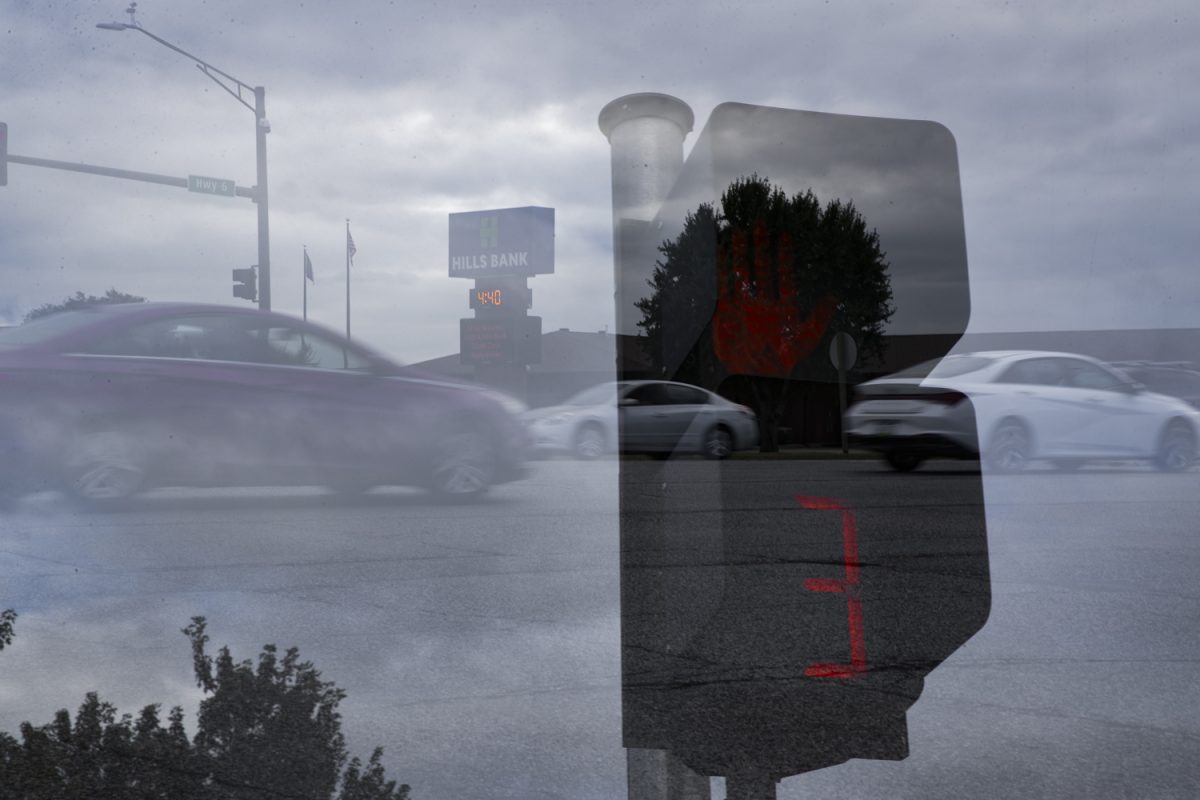Iowa City is in the planning stages of making the pedestrian experience by Highway 1 and 6 safer in the coming years.
The city plans to add pedestrian and bike infrastructure to complete the existing Highway 1 and 6 trail system in 2028, which is when the Highway 6 bridge will be replaced by the Iowa Department of Transportation.
According to Iowa City City Council meeting documents, the Iowa DOT’s reconstruction project will include a separated bike and pedestrian facilities on the new Highway 6 bridge. When the bridge is reconstructed, the city plans to connect the bridge’s walkways and trails to the Highway 1 and 6 trails, Jason Havel, the Iowa City’s city engineer, said.
Right now, Highway 1 has a portion of a trail on the north side near the Riverside Drive intersection on the west side of the Iowa River, Havel said. The Highway 6 trail is along the south side of the highway on the east side of the river, he said. This proposed project would connect these portions and is estimated to cost around $720,000.
Before the 2028 project, the Highway 6 trail will receive a $1.7 million expansion between Broadway Street and Fairmeadows Park, Havel said. This project is planned for construction in 2026, he said.
Across the Iowa River near the two highways, there are several services that people need to reach in their daily lives, including grocery stores and workplaces. This project will help those on foot or bike reach their destination in a safer manner, Sarah Walz, associate transportation planner for the city, said.
The city conducted a pedestrian count over two weeks in September and found that around 120 bicyclists and pedestrians cross the bridge every day, Walz said. According to meeting documents, the Highway 1 and 6 corridor sees about 34,000 vehicles each day.
While this area is well-traveled, it can also be dangerous for pedestrians because of the lack of pedestrian infrastructure. According to the Iowa City Pedestrian Collision Analysis report by the Metropolitan Planning Organization of Johnson County, the Highway 1 and 6 intersection at Riverside Drive ranked at 18 out of the 25 most frequent locations in the city for pedestrian-involved collisions from 2013 to 2022.
Additionally, the report states that 27 percent —7 out of 26 — of pedestrian collisions that resulted in serious injury or fatality from 2013 to 2022 happened on Highways 1 and 6.
RELATED: Iowa City found to be safer for pedestrians compared to state, national averages
Walz said this infrastructure is important because anyone can be a pedestrian and could find themselves on foot in this area.
“Nobody knows when they're going to be a pedestrian, like if your car breaks down or you get in an accident and you have to walk somewhere,” Walz said. “This is within town — it's not out in the country, it's within town — so we want people to get there safely.”
Biking along highways, especially those without adequate infrastructure, can also be treacherous. According to 2023 data from the Iowa DOT Crash Analysis Tool, there were 333 total crashes involving pedestrians on bikes, with over 30 of those crashes resulting in death or serious injury.
Having strong biking and pedestrian infrastructure makes a city more desirable to live in, Luke Hoffman, executive director of the Iowa Bicycle Coalition, said.
While Iowa has a great trail system, there are still many improvements to be made to help people commute on these trails, Hoffman said. For example, Hoffman and the Iowa Bicycle Coalition have been advocating for Iowa to adopt a “hands-free” law, meaning that Bluetooth must be used for phone calls in the car. According to the U.S. Bureau of Transportation Statistics, 24 states have these laws in place as of August 2023.
Hands-free laws in nearby states have been found to make an impact on distracted driving accidents. A 2024 article from Forbes stated that since Ohio passed such a law in April 2023, experts estimated that over 3,000 crashes were prevented.
Trails are also often built to accommodate recreational purposes rather than as a means of transportation, which is another gap the state needs to fill, Hoffman said.
The Highway 1 and 6 trail system has been assembled piece by piece over many years because of how expansive the project would be to tackle all at once, Havel said. The 2028 Iowa DOT project presents a chance to finish off the two trails, he said.
“This is a good opportunity for us to coordinate with the DOT and I think really make a big improvement in an area where we know there's a need for pedestrian facilities,” Havel said.



